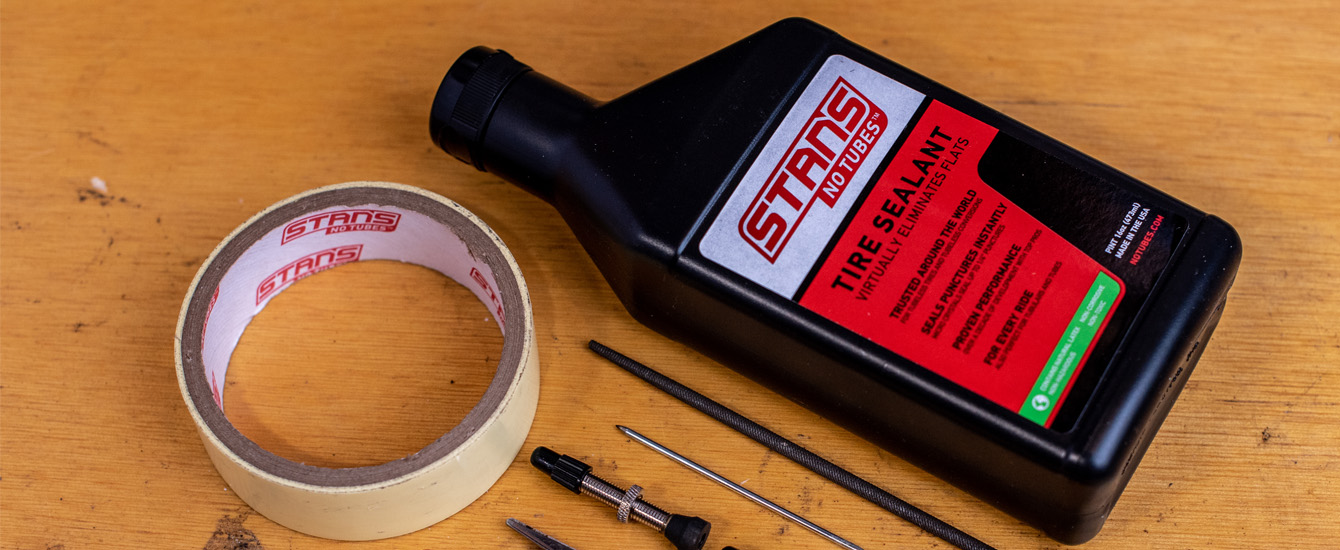We recommend using about 50 ml of sealant in road tires, 70-80 ml in gravel tires, and 100-120 ml in MTB tires. When setting up tubeless tires on our wheels, we use Stan’s sealant.
The amount of sealant should match the tire width. For road tires, do not use less than 50 ml because high pressure can cause partial sealant loss before it effectively seals a puncture.
It is recommended to add about 20-50 ml of sealant every 2-3 months, but depending on usage and punctures, more frequent top-ups may be needed. The easiest and fastest way to add sealant is through the valve after removing the core (instructional videos in the second part).
Additional Tubeless Tips:
- Do not mix sealants from different brands. If changing brands, clean the tire.
- If you are unsure if there is enough sealant in the tire, a simple way to check is by removing the wheel and shaking it. Ideally, you should hear the sound of the sealant inside. If you don't hear it, you need to add sealant.
- Before adding new sealant after a long period of not using the bike, clean the tire and rim to remove old sealant and any dirt inside.
- If the bike will not be used during the off-season, it is recommended to remove the sealant to prevent it from drying out and losing its sealing properties. Alternatively, if the bike will not be used for a long time, spin the wheels every 1-2 weeks to keep the sealant distributed inside. Good quality sealant retains its properties if it does not dry out in the tire.
- Regularly check the condition of the valve. A poorly mounted valve can cause pressure loss. Additionally, the valve core often gets filled and clogged with the rest of sealant, making it hard to pump the tire. Therefore, clean it thoroughly or replace it.
- Always check the maximum allowable pressure on the tire and follow the recommendations. Tubeless tire pressure is lower than that for tubed tires to increase ride comfort, improve grip, and traction.
Author's compilation. Copying and distribution of content is prohibited. © Copyright Lemonbike.eu
Helpful Maintenance Videos:
Adding tubeless sealant through the valve – quickest method
install tubeless tires (tire, sealant, valves)
Installing tubeless tape on the rim
